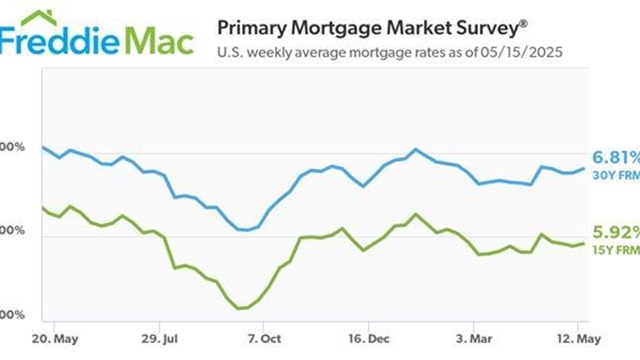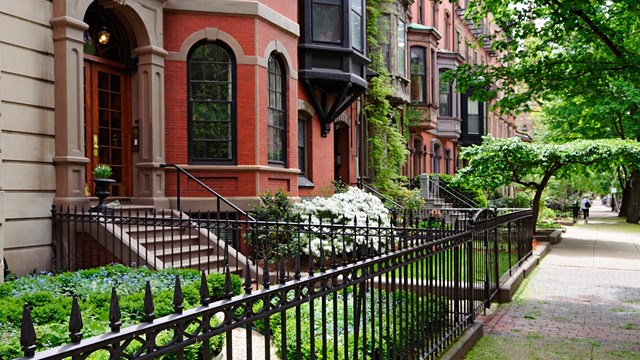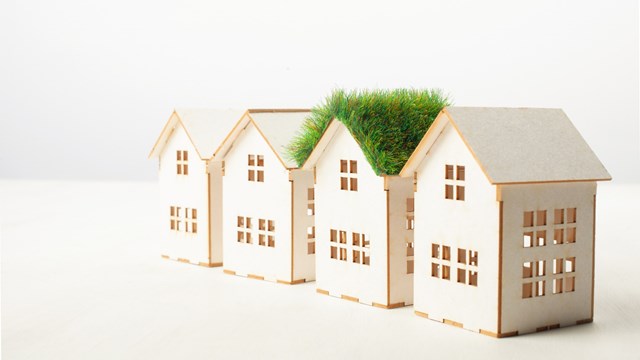
The last few years have been a rollercoaster ride for the condominium markets nationwide. After reaching a high in 2016, many factors collided to bring pressure on the market with varying effects. These factors included the change in SALT deductions for federal income taxes, the overbuilding and resulting oversupply in the luxury market, the fractious 2020 election, and the COVID pandemic. Where are the markets headed now?
The Current Picture
“Heading into the pandemic,” says Jonathan Miller, president of Miller Samuel, a national real estate appraisal and consulting firm based in New York, “the condominium market in downtown Boston was among the fastest growing markets in the United States.” After a decline during the early part of the COVID pandemic, the condo market in downtown Boston appears to be heading back upward, says Miller. In the current condo market in Boston, 27% of available units sell above asking price. Lack of supply is the bedrock cause of this trend.
“The COVID discount has compressed quickly,” Miller continues. “When companies bring back their workers, we will see another surge in price improvement. This will help commercial real estate as well, though right now we are seeing an unexpected delay as a result of the delta variant until later in fall or early winter, when people finally come back to the office.”
According to Brian Allenby, a realtor with eXp, an online brokerage with affiliates in 50 states and 19 countries, “As it applies to both the past and future, housing is something everyone needs, because everyone needs a place to live. Low interest rates have driven demand during COVID. Additionally, buyers are now seeking both office and entertainment space in their homes, and are moving further out into the suburbs, which they might not have considered in the past.” He observes that all these factors are fueling the current market, and will most likely continue into the foreseeable future, dovetailing with a certain level of uncertainty that won’t resolve until the pandemic does.
“When COVID hit, everything shut down,” says Dorothy Manning, also with eXp and based in Boston. “There was a mass exodus to the suburbs and rural America. Many people moved to New Hampshire to work remotely. The condo market took a hit because it was flooded with units for sale. A lot of owners ended up leasing their units. It has started to pick up, though, and buyers are coming back. There will always be people who want to live a downtown lifestyle—particularly younger millennials.”
Seasonality & Financing
Miller explains that pricing for condominiums and co-ops is still below pre-COVID levels in many places, though it is rising quickly. Several reports in the latter part of September show condo prices rising about 10% this past quarter in numerous markets. “Whether we talk about Boston, New York, or Florida [housing] markets, they still display heavy volume with a return to normal seasonal patterns,” says Miller. He adds that most of this heavy demand is being framed around low mortgage rates.
“The market,” Miller says, “is overly reliant on low-cost financing. On the other hand, lending standards and underwriting are easily 20% tighter than before the housing bubble that caused the Great Recession. We are not looking at a housing bubble crisis. Price trajectory without bank involvement will regulate prices, and we will see improvement in all markets. Lending standards are tight, and there’s lots of stimulus money. When the economy recovers, and office workers go back to work, we will have a gradual recovery into 2022. The delta variant does add an additional layer of uncertainty, but won’t derail it—it’s just postponed it by a few months.”
The Luxury Market
A few years ago, the top end of the market in many locations was severely overbuilt. The sheer number of units planned, approved, financed, and scheduled for construction ran into a headwind with the change in tax laws and the uncertainties of the 2020 election. The arrival of COVID only exacerbated the problem.
“Those buying in new developments,” says Miller, “are looking for a value proposition, an opportunity to save money. What we are seeing now is that new development listing inventory is down 4.4% from two years ago. Decline in supply is up about 140% from last summer. That’s still on the low side, but significantly up from last year, and we’re seeing median sale prices at parity with pre-COVID levels of two years ago. Since the beginning of the year, we’ve seen a compression of the COVID discount; we don’t think there’s a lot of discount left. Luxury market median price is now 9% below two years ago, which suggests there is additional future demand for this type of property. Prior to the pandemic, the narrative was that the market was soft at the top, and tighter as you lowered prices. That reversed after the lockdown. Economically, conditions were weighted against wage earners, so upper salary types and mid-tier buyers didn’t feel the economic downturn of COVID as severely.”
Manning concurs. “Luxury units are selling,” she says. “They didn’t experience as big a drop during the pandemic as mid-level units did. As to foreign investment, we are still regarded as the world’s most stable economy. People still park their money here, despite our recent problems.”
“Despite the pandemic, those with access to money did very well,” says Allenby. “They had the flexibility to adapt to the situation, and the luxury market did not take a hit during COVID. There have been shifts in preferences, though. Value remains strong in the luxury market downtown. There was a short-term drop in prices, but it’s bounced back up to a consistent strong position. Prices have recovered and are slightly higher than pre-COVID rates.”
The Blurred Line between Work & Home
It’s generally acknowledged at this point that even after COVID is eradicated (or at least brought under better control), Zoom is probably here forever. Sick as we may be of staring at screens, forgetting to switch on our mics, or shooing kids and pets away during work calls, video conferencing has proved to be a vital bridge between work and home.
“We are in a discovery phase,” says Miller, “where corporate America is trying to figure out how this works down the road. The relationship between work and home has changed; the future isn’t going to be as it is now or was before COVID, but rather somewhere in between. Industries will adapt to a new balance between work and home. It’s become an employee benefit to have that flexibility. That changes things, like markets in the suburbs. You have reverse commuters, which wasn’t on the table before.
“What didn’t happen,” Miller continues, “was that for the most part, people didn’t just sell their homes in the city and move away. Many bought second homes—co-primary or alternative-primary homes, so to speak—and thanks to remote work, they commute less. One thing I think the experts and pundits have wrong about remote work is that they’re focusing on people who work in the city and live in the suburbs—overlooking those who do the opposite: living in the city and working in the suburbs. There are currently more people telecommuting from Manhattan to the suburbs than from the suburbs to city-based or other suburban work locations right now. People who want to live in the city will work remotely for companies based in the suburbs—and vice versa—in the future.”
Suburban vs. Urban
In the greater Boston market, buyers have distinct choices between urban and suburban lifestyles, with many gravitating toward the popular townhouse condos common throughout suburban Boston.
“In terms of pricing and lifestyle, townhouses in suburbs are a great entry point for first-time buyers,” says Allenby. “A townhouse gives you the opportunity of ownership without a complete lifestyle change. You don’t worry about cutting grass. During COVID, this segment of the market was up, because it wasn’t urban, and was less dense. People wanted more space, so they made the jump and bought—so the townhouse market remains strong.”
Manning points out that “many suburbanites are also keeping a unit downtown—some for personal use, and some for rental investment. In general, younger buyers are looking for downtown condominiums.”
Overall, both Manning and Allenby see their markets in downtown Boston and in the suburbs as improving. While COVID did bring some uncertainty and a bit of a rollercoaster ride to the market, that ride seems to have calmed, and according to the pros, its direction seems to be trending carefully—but steadily—upward.
A J Sidransky is a staff writer/reporter for New England Condominium, and a published novelist.









Leave a Comment